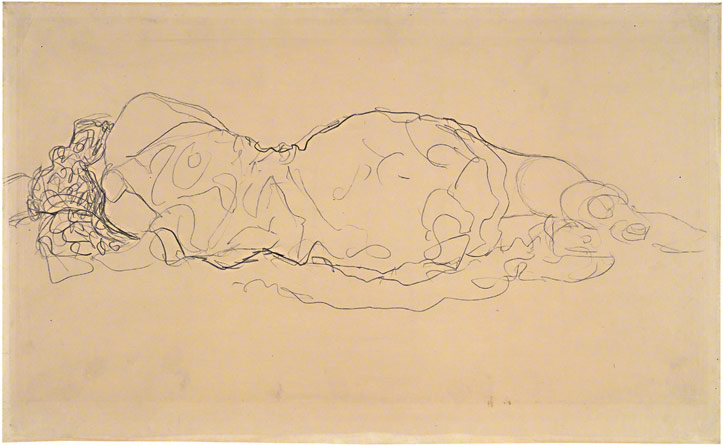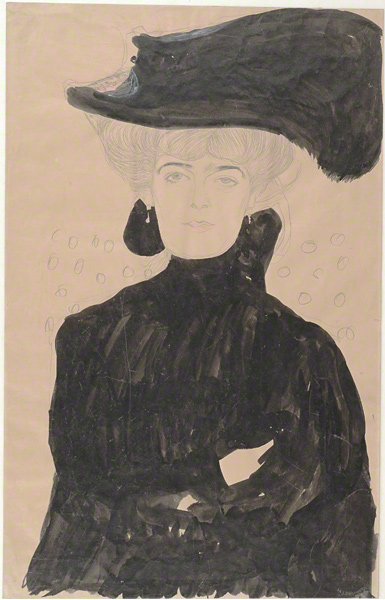Klimt & Life Drawing
Floating Women
The theme of floating women held enormous symbolic and artistic significance for Klimt from the Secession period onward. Floating in the literal sense gives way in his drawings to a psychological state of floating in an erotic trance induced by autoeroticism and lesbian love. The models' rapt involvement with self or each other transports them into a female world of their own, at an utter remove from the male world of action and engagement—except of course for Klimt's lone artistic eye in the confines of his studio. In these drawings there is tension between a mood of erotic abandonment and formal discipline. Klimt depicts the models in various prone positions, parallel to the picture plane and often with feet cropped. His favored media of smooth Japanese paper and silvery pencil or glowing colored pencils of red and blue enhance the sense of weightless, flowing form.
Life Drawing
It is not an exaggeration to say that Klimt's fount of inspiration resided in life drawing. The great subject of his art was the human condition, and all of the emotive figures encountered in his paintings find their beginnings in his drawings of live models. While Klimt was a painstaking and slow painter, he was a swift and decisive draftsman. Through pose after pose, he refined the slightest nuances of gesture until he hit a perfect pitch of desired expression. Working alone with no assistants, Klimt drew models, mostly female, in the privacy of his studio.
From the time of the formation of the Secession, Klimt made drawings and paintings of women, as he searched for an ideal type. This elaborately dressed woman is perhaps a prostitute. She is portrayed with direct frontality and stares out with a mask-like face. The latter quality is heightened by the contrast of her black hat and high-collared cape with the reserve of the paper that forms her face. As a whole the drawing constitutes a sophisticated play of flat shapes and contours.


